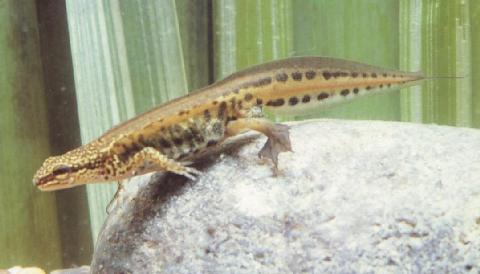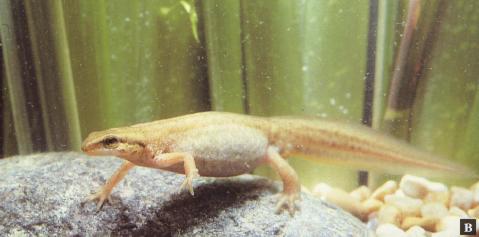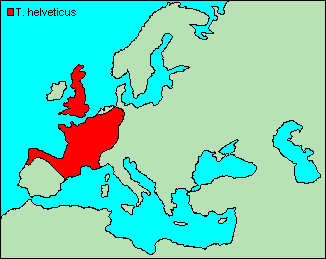

Male Triturus helveticus. Photo by R. Griffiths.

Female Triturus helveticus. Photo by R. Griffiths.


Mating behaviour: male shown in black, female in white. From Arntzen & Sparreboom (1989).
DESCRIPTION
The palmate newt is rather small, reaching around 9 cm in total length. Basic colouring is brown or greenish, with dark spots on the flanks, these being more numerous in the male. The belly is pale orange or yellow, often with some spotting, although the throat is not spotted. Males have marked dorsolateral ridges, giving them a rather square cross-section. Individuals in breeding condition also have a low, straight-edged crest along the body and tail, a thin filament at the end of the tail, and dark webbing is present on the hind feet.. The tail itself has two rows of large dark spots bordering a thin central orange band. The male's cloacal swelling is dark in colour.
SUBSPECIES
T. h. helveticus
This nominate subspecies covers the greater part of the species'
range, occuring from northern Germany to northeastern Spain.
T. h. punctillatus
This subspecies is known only from the Sierra de la Demanda, in
Spain.
T. h. alonsoi.
This subspecies occurs in the north-western corner of the Iberian
peninsula. Also known as T. h. sequeirai.
REFERENCES
Arntzen, J. W. & Sparreboom, M., 1989. A phylogeny for the Old World newts, genus Triturus: biochemical and behavioural data. Journal of Zoology 219: 645-664. [ABSTRACT]
